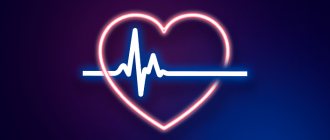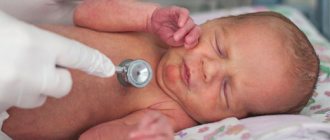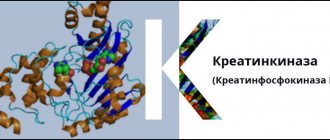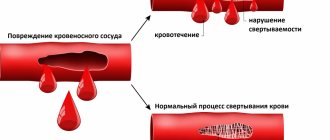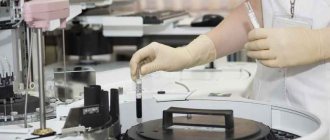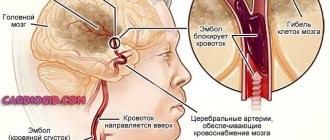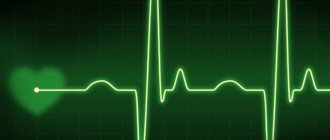Blood pressure indicators (average values) in children (mm Hg)
| Age | Blood pressure (mm Hg) |
| 1 month | 80/40 mmHg |
| 6 months | 85/45 mmHg |
| 1 year | 90/50 mmHg |
| 5 years | 100/50 mmHg |
| 10 years | 110/65 mmHg |
| 14 years | 120/70 mmHg |
NB ! Blood pressure readings may be erroneous if the size of the rubber cuff does not match the patient's arm size. If an adult cuff is used in a child, the results are significantly lower - the error when measuring blood pressure is from 5 to 15 mm Hg.
Critical values of systolic blood pressure in children, below which hemodynamics are considered unstable
| Up to 1 year | 60-50 mm Hg. |
| 1-5 years | 70 mmHg |
| 6-10 years | 80 mmHg |
| 11-12 years old | 90 mmHg |
| 15 years and older | 100 mmHg |
NB ! If it is not possible to measure blood pressure in children, remember that the presence of a pulse in the peripheral vessels is approximately equal to a SBP of 70 mm Hg, in the axillary artery - approximately 50 mm Hg, if not in the carotid artery - diastolic blood pressure is less than 50 mm Hg .st.!!!
Deviations from the norm
If your pulse is too fast
If the heart rate exceeds the norm, the reasons may be as follows:
- hot weather;
- exercise stress;
- stressful situation.
In these cases, the pulse may increase three times, but this is not a pathology. A child may have a rapid heartbeat even at rest. Main reasons:
- prostration;
- overwork;
- heart diseases;
- endocrine diseases;
- respiratory diseases;
- anemia;
- infectious lesions.
If the pulse is too low
If you feel normal and no pathologies are found, a rare pulse indicates good training.
Low heart rate values are typical for children involved in sports, especially those that require the development of endurance.
But bradycardia can be associated with pathologies and be accompanied by unpleasant symptoms. If your baby complains of dizziness, weakness, loss of strength, and has high or low blood pressure, you need to show him to a doctor as soon as possible.
What to pay attention to
If your child plays sports, you need to monitor your heart rate during exercise. It is important that during training the heart rate does not exceed the maximum permissible values, which are calculated using the formula: 220 minus age.
You should know that the heart rate should return to normal within ten minutes after stopping the exercise.
In order to select the optimal load, you need to calculate the lower limit of your heart rate. To do this, you need to subtract age from 220. Subtract your resting heart rate from the resulting value. Multiply the resulting number by 0.5 and increase your heart rate before training.
If the heart rate value is below this limit, the load can be increased.
Age indicators of RR and HR
| Age | BH/min | Heart rate beats/min |
| Newborn | 40-60 | 120-140 |
| 1-2 months | 35-48 | 130-135 |
| 6 months | 35 | 130 |
| 1 year | 30 | 120 |
| 5 years | 25 | 100 |
| 8 years | 90 | |
| 10 years | 20 | 80 |
| 14 years | 20 | 70 |
Correct pulse counting in children: algorithm
Places for measuring the pulse in children
To count the pulse in children, you need to proceed in this order:
- Prepare a watch with seconds indication (stopwatch, with a second hand).
- Warm your hands with warm water.
- It is convenient to sit or lay down the child (small children need to be distracted by reading), you should be completely at rest for at least 10 minutes.
- Find the place of pulsation of the artery (carotid on the neck near the thyroid cartilage, wrist near the base of the thumb, on the temple).
- Mark the time.
- Count pulse beats for 60 seconds.
In children under 2 years old, the temporal or carotid artery is selected to determine the pulse, and up to one year old, the heart rate is calculated during sleep. At an older age, it is already possible to measure the indicator on the wrist, but it is important to ensure that the hand does not strain and is not suspended. If the pulsation is weak, the heart rate is measured using a stethoscope; it is placed in the left half of the chest 2-3 cm below the nipple areola.
If the child is of school age, then it is quite possible to monitor the pulse using a fitness bracelet or wrist tonometer.
Daily amount of urine and frequency of urination depending on age
| Age | Average quantitative indicators | ||
| Amount of urine per day, ml | Number of urinations per day | Single amount of urine, ml | |
| Up to 6 months | 300-500 | 20-25 | 20-35 |
| 6 months-1 year | 300-600 | 15-16 | 25-45 |
| 1-3 years | 760-820 | 10-12 | 60-90 |
| 3-5 years | 900-1070 | 7-9 | 70-90 |
| 5-7 years | 1070-1300 | 7-9 | 100-150 |
| 7-9 years | 1240-1520 | 7-8 | 145-190 |
| 9-11 years | 1520-1670 | 7-8 | 220-260 |
| 11-14 years old | 1600-1900 | 6-7 | 250-270 |
Pulse
Parents often ask us the question: “What heart rate is considered normal for a child?”
Heartbeat is one of the main vital parameters that is used to identify a number of pathologies. By observing the nature of the changes, specialists can draw conclusions about the state of the human heart and the entire body as a whole. The normal heart rate of a child is significantly different from that of an adult. Want to check if your child's pulse is normal? See the table of norms by age, the average value and normal limits are indicated here.
Any concerns? You can always consult a pediatrician or cardiologist at the MedVedik Children's Health Clinic.
Calculation of body weight (M) in children
| In children of the first year of life | Body M at birth + 800 g (for the 1st month) + 600 g for each subsequent month of life up to 6 months. and + 400 g for each subsequent month after 6 months. |
| In children older than one year | Body m of a 5 year old child = 19 kg Up to 5 years: M = 19 – 2 for each missing year 5-11 years: M= 19 + 3 for each year exceeding 5 years Over 11 years old: M= 3 ages in years |
Respiratory system
The respiratory system, consisting of internal (tissue) and external components, provides the body with energy.
Also significantly influencing its work are:
- external factors (temperature, air humidity, atmospheric pressure);
- functioning of the cardiovascular system;
- blood diseases (usually with impaired red blood cell function);
- nervous factors;
- humoral factors;
- tissue oxygen demand (increases during exercise and decreases at rest).
The external respiration system ensures the timely entry of oxygen into the blood and the removal of excess carbon dioxide from it, which is of great importance for the life of the body. Regulation of activity is carried out from the respiratory center located in the medulla oblongata.
- Normal heart rate in children by age
Volume of liquid for gastric lavage
| Age | Single (ml) | Total (ml) |
| Newborn | 15-20 | 100 |
| 1 – 6 months | 60-100 | 500 |
| 7-12 months | 110-150 | 1000 |
| 2-5 years | 200-350 | 3000-5000 |
| 6-10 years | 350-450 | 6000-8000 |
| 11-15 years | 450-600 | 6000-10000 |
| Adults | 5-10 ml/kg | 2-5-10x |
Why does the breathing rate differ in newborns?
If we compare measurement data from a newborn child and an adult, then the former has higher values of respiratory rate and pulse. This is explained by the fact that breathing and pulse in children provide intense metabolism. It is a necessary condition for the growth and development of the body.
The second reason is the imperfection of nervous regulation. The vasomotor center of the brain is still in the maturation stage until the age of 5-6 years, and the inhibitory influence of the vagus nerve does not fully manifest itself until the age of 7 years.
Even more differences in the functioning of the heart and respiratory organs were noted in a premature baby:
- inconsistent breathing rate;
- pauses of varying lengths between inhalation and exhalation (apnea);
- changeable pulse in frequency and filling.
Amount of water to cleanse the intestines
| Age | Amount of water for cleansing enema (ml) | Amount of water for siphon enema (ml) |
| 1-2 months | 30-40 | — |
| 2-4 months | 60 | 800-1000 |
| 6-9 months | 100-200 | 1000-1500 |
| 2-5 years | 200 | 1000-1500 |
| 6-10 years | 300 | 2000-3000 |
| Adults | 400-500 | 5000-8000 |
What determines the baby's heart rate?
The heart rate in children depends on:
- age (the older you are, the lower the norm),
- body weight,
- body position when measuring,
- time of day, etc.
For maximum accuracy, take multiple measurements under the same conditions. For example, try to take your child’s pulse at the same time of day, in the same body position, etc. If the child is sick or naughty, it is better to postpone the procedure. Before taking your pulse, measure your body temperature. The norm is 36.5-37.0 °C.
Maximum volume of colloid infusion in the prehospital setting
| Age | Amount of solution in ml |
| up to 1 year | 200 |
| 1-5 years | 200-400 |
| 6-10 years | 400-600 |
| 11-15 years | 600-800 |
| 15 years and older | 1000 |
What are heart rate and respiratory rate?
Heart rate is a count of the number of times the heart beats per minute. Respiratory rate is the number of inhalations and exhalations per minute. These indicators make it possible to determine how deep and rhythmic breathing is, as well as the ability to analyze the performance of the chest. Heartbeat characteristics differ during different periods of growth.
- Normal human pulse by year: Tables by age for adults
Specify your pressureMove the sliders 120 to 80 Return to contents
Clinical symptoms of poisoning
| Substance | Symptoms |
| Atropine (belladonna, henbane, datura) | Dilated pupils that do not respond to light. Hyperemia, dry skin and mucous membranes. Tachycardia. Hyperthermia. Hallucinations, convulsions. |
| Vapors of gasoline, kerosene, turpentine | Icteric skin. Shortness of breath, hemoptysis. Cyanosis. Cramps. |
| FOS | Constriction of the pupils. Pallor, hypothermia. Hypersalivation, bronchorrhea. Breathing problems. Stomach ache. Bradycardia, arterial hypotension. Cramps. |
| Saltpeter, nitrates | Diffuse cyanosis that does not improve after oxygen therapy. Dyspnea. Tachycardia. Cramps. |
| Carbon monoxide | Headache, dizziness. Chest pain. Cough. Vomit. Hyperthermia, then pallor. Convulsions, paresis and paralysis. Pulmonary edema. |
| Mushrooms: | Latent period from 6 to 24 hours. Stomach ache. Vomit. Cholera-like enterocolitis. Delirium, adynamia. Collapse. Coma. |
| Pale grebe (phalloin, phalloidin, amanite) | |
| Fly agaric (muscarine, muscaridine, etc.) | Latent period 1-2 hours. Drooling, nausea, abdominal pain, vomiting, diarrhea. Constriction of the pupils, difficulty breathing. Visual disturbances, delusions, hallucinations. Coma. |
| String, morel (galveolic acid) | Latent period 1/2-2 hours to 6 hours. Gastroenteritis. Hemolytic anemia, jaundice. Hematuria. |
Differential diagnosis of poisonings accompanied by miosis
| Symptoms | Psychoactive substances | |||
| Opiates | Ethanol | Barbiturates | Benzodiazepines | |
| Pupil | Miosis | Miosis | Miosis | Miosis |
| Level of consciousness | Oppressed to coma | Excitement gives way to depression | Drowsiness, coma | Drowsiness, coma |
| Skin and mucous membranes | Pale, wet, sticky | Hyperemia gives way to pallor. Profuse sweating, hypersalivation. | “Barbiturate burn” - bubbles at the point of pressure | Sweating |
| Convulsions | Eat | Possible (a dangerous harbinger of coma) | No, muscle relaxation | No, muscle relaxation |
| Heart rate, pulse | Bradycardia, then thready pulse | Tachycardia gives way to bradycardia | Not changed | Not changed |
| HELL | Hypotension | Hypertension then hypotension | Hypotension | Hypotension |
| Breath | Depressed to the point of apnea | Tachyhypopnea | Oppressed | Oppressed |
| Pulmonary edema | Available | No | Eat | Eat |
| Bronchorea | No | No | No | No |
| T body | Demoted | Not changed | Not changed | Not changed |
| Abdominal pain | No | No | No | No |
| Dyspepsia | Vomit | No | Nausea, vomiting | Nausea, vomiting |
Differential diagnosis of poisonings accompanied by mydriasis
| Symptoms | Psychoactive substances | ||||||
| Tricyclic antidepressants | Cocaine | Ecstasy | Amphetamines | Hashish | LSD | Mushrooms are hallucinogens | |
| Pupil | Midriaz | Midriaz | Midriaz | Midriaz | Midriaz | Midriaz | Midriaz |
| Level of consciousness | Visual hallucinations, depression of consciousness up to coma | Excitement auditory hallucinations | Excitement, panic, delirium | Inducing psychosis | Excitement, possible hallucinations, delusions | Excitement, panic, hallucinations rave | Visual and auditory hallucinations |
| Skin and mucous membranes | Dry mucous membranes | Sweating, paleness, scratch marks, “cocaine bugs” | Sweating | Regular | Injected scleral vessels | Sweating | Sweating, hypersalivation |
| Convulsions | Possible | No | Reduction of jaws | No | Muscle reduction | No | No |
| Heart rate, pulse | Tachycardia, sudden cardiac arrest | Tachycardia | Tachycardia | Tachycardia | Tachycardia | Tachycardia | Bradycardia turns into tachycardia |
| HELL | Not changed | Hypertension | Not changed | Hypertension, then hypotension | Hypertension | Hypertension | Hypertension |
| Breath | Oppressed | Cocaine runny nose | Not changed | Bronchodilation | Not changed | Not changed | Not changed |
| Pulmonary edema | No | No | No | No | No | No | No |
| Bronchorea | No | No | No | No | No | No | No |
| T body | Hyperthermia | Hyperthermia | Hyperthermia | Hyperthermia | Not changed | Fever | Fever |
| Abdominal pain | Intestinal paresis | No | No | No | No | No | Eat |
| Dyspepsia | No | No | No | Nausea, vomiting | No | Nausea | Nausea, vomiting, diarrhea |
| Exicosis | No | No | Eat | No | No | No | Eat |
| Vision | Spasm of accommodation | Not changed | Not changed | Not changed | Not changed | Not changed | Diplopia |
Determination of heart rate and respiratory movements
Calculation of respiratory rate and heart rate is a mandatory procedure when examining newborns. It helps to assess the baby’s well-being, because he himself will not be able to report what symptoms are bothering him. You can take measurements yourself, without waiting for an appointment with a pediatrician. Respiration rate, pulse rate, blood pressure level are sometimes the only signals about impending danger.
Calculating the child's respiratory rate and pulse is a simple procedure that only takes a minute. It has its own subtleties:
- Respiration rate and pulse are measured at rest. Emotional arousal (laughter, anxiety, tears) or physical activity (active games) are instantly reflected in the value of the indicator. The research will not be objective. The best option is to measure the number of breaths while the child is sleeping, and then the result will not be distorted.
- You need to count your breaths and heartbeats for exactly one minute. If you try to calculate how many of them occur in less time, and then use mathematical operations to calculate the minute indicator, the result will be incorrect. The breathing and heartbeat of an infant are characterized by arrhythmia, so the number of breaths or beats in equal periods of time may vary.
- The results obtained do not mean that we need to immediately sound the alarm. If the baby looks healthy, you simply made a mistake in the calculation. It is better to find out this point during an examination by a pediatrician.
